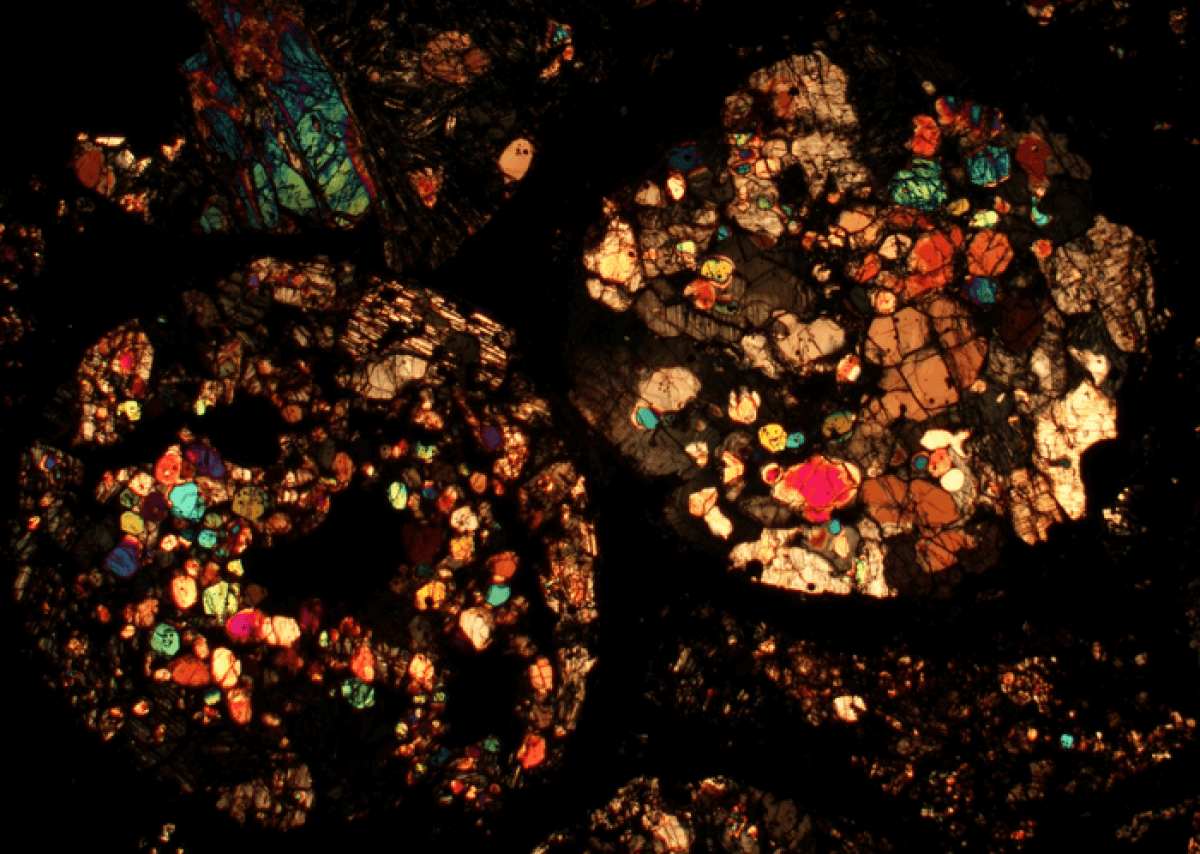WASHINGTON — Life on Earth owes its existence to blazing fireballs from space carrying rich minerals through our solar system 4.6 billion years ago, a new study reveals. Researchers with the American Association for the Advancement of Science say these meteorites carried carbonaceous chondrite — a stony material rich in potassium and zinc — from the outer solar system all the way to Earth.
The minerals made up roughly 10 percent of the space rocks’ composition. However, this provided Earth with a fifth of its potassium and half of its zinc during its formation.
Zinc played a vital role in the creation of DNA, while potassium helped produce fluids in cells. Two separate studies show the volatile elements were not evenly distributed throughout the original hot solar nebula.
“Our studies complement and confirm each other’s results in multiple ways,” writes study author Nicole Nie from the Carnegie Institution for Science in a media release. “Among moderately volatile elements, K is the least volatile while Zn is one of the most volatile elements.”
The other 90 percent of these meteors consisted of non-carbonaceous (NC) material from the inner solar system. The findings confirm that Earth formed partly from carbonaceous meteorites from asteroids in the outer main-belt of the system.
They also housed water ices and clays. The rocks formed very far out in space and fell out of their distant orbits after smashing into other meteors. Through an analysis of 50 meteorites, the teams identified a phenomenon known as “nucleosynthetic isotope anomalies.” They are small differences in chemical ratios produced when elements form.
“This tells us that, like a poorly mixed cake batter, there wasn’t an even distribution of materials between the outer reaches of the Solar System where the carbonaceous chondrites formed, and the inner Solar System, where we live,” adds study author Anat Shahar.

During formation of the solar system, gas condensed into solid dust which was then incorporated into meteorites and the terrestrial planets — including Earth. Different nucleosynthetic anomalies were inherited by material in different parts of the early solar system.
The origin of the material that formed Earth can be constrained by measuring the nucleosynthetic anomalies of meteorites. However, those of volatile elements that condense at low temperatures have been difficult to measure.
Dr. Nie and her colleagues got to the bottom of the puzzle by discovering some anomalies were larger and more variable in carbonaceous chondrite. The ratio of Earth rocks closely matches that of non-carbonaceous varieties, suggesting they delivered a large amount of potassium. When compared to the isotopic signature of Earth’s zinc, however, the researchers found 50 percent of it come from carbonaceous chondrite.
The findings in the journal Science indicate that material from the outer solar system could have substantially contributed to Earth’s other volatile elements.
“The extreme conditions found in stellar interiors enable stars to manufacture elements using nuclear fusion,” Nie explains in a statement. “Each stellar generation seeds the raw material from which subsequent generations are born and we can trace the history of this material across time.”
“It is only recently that scientists challenged a once long-held belief that the conditions in the solar nebula that birthed our Sun were hot enough to burn off all volatile elements,” Shahar concludes. “This research provides fresh evidence that volatiles could survive the Sun’s formation.”
South West News Service writer Mark Waghorn contributed to this report.

